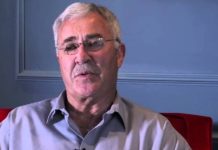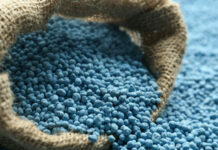
[miningmx.com] – “INVESTORS are looking for some resolution from
the G20 – so expect to be disappointed’. Thus read one particularly cynical note
from Fairfax Securities, a UK broker, regarding the recent G20 meeting in Los
Cabos, Mexico last week. A key part of the G20’s discussion was on helping to stem
the spiralling economic crisis in Europe. Instead, however, Fairfax expected more
rhetoric. “We do not expect to see any firm resolution from policy-makers,’ it said.
There are indications, however, that the debate regarding Europe’s woes has
broadened and that this will trigger concerted action. In fact, in the estimation of
Kevin Lings, chief economist at Stanlib, Eurozone troubles have become more of a
global crisis than ever before; informing even China’s metered reduction in GDP
growth, which is now set at 8% for this year. The neighbours are becoming uneasy.
Both China and the US, which some consider to have better managed its financial
and economic crisis, are inclined to favour growing out of an economic crisis over
policies of austerity and fiscal conservatism. In fact, the election of Francois Hollande
and his socialist party in France, and the New Democracy in Greece are predicated
on the hope a new response to the European crisis can be found; one that doesn’t
include a diet of bread and water.
“A global debate has been convened, and it’s not an endorsement of austerity,’ says
Lings. According to Lings, the Eurozone worthies desperately need to think about
imposing what he terms “smart austerity’; a kind of alchemy in Lings’s view that
asks of troubled European states to spend, but spend wisely. “The debate is swinging
back to growing out of the crisis.’
Lings believes the best kind of spending Europe can do will be on infrastructure.
From a mining perspective, infrastructure spend in the Eurozone can only be good
news. As it puts money back in pockets, creates employment and raises confidence,
key markets in which metals have a major role will return to some vestige of
health. One area is platinum usage in autocatalysis. According to Thomson Reuters
GFMS, Europe is the most important consuming region of platinum in autocatalyst
applications.
Given all the gloom and scepticism regarding Europe’s ecomomic growth, demand
last year for platinum autocatalysts was actually 5% higher at 1.5 million ounces –
making the region worth 49% of global platinum autocatalyst consumption.
“However, while its share has held up, Europe’s absolute consumption has reduced
considerably since peaking at just over 2 million oz in 2007,’ says Thomson Reuters
GFMS.
The other precious metal that South Africans probably care most about is gold.
Unlike platinum, gold marches to a different drum; providing the store of value
when places like Europe lose theirs. Might a gradual move towards targeted growth
signal what investors seem to have been telling us for some while, that gold’s
decade-long bull run has come to an end?
In a recent note, Macquarie Securites acknowledged that gold’s behaviour seemed to
have departed from previous models, or expectations. Influencing its short-term
movements, however, is the prospect the US Fed will eventually impose another
round of some kind of quantitative easing, effectively issuing money into the
financial system.
Lings thinks a fresh round of QE – this will be QE3 – doesn’t make sense as bond
yields have already been tempered in the US. Only equities will experience a short
kicker, he says. Yet, expectations remain high that gold will receive a jugful of
adrenalin before long. “Nevertheless, with it increasingly likely that the Fed will do
something, gold should continue to find buyers,’ said Macquarie Securities in a
report dated June 14.









